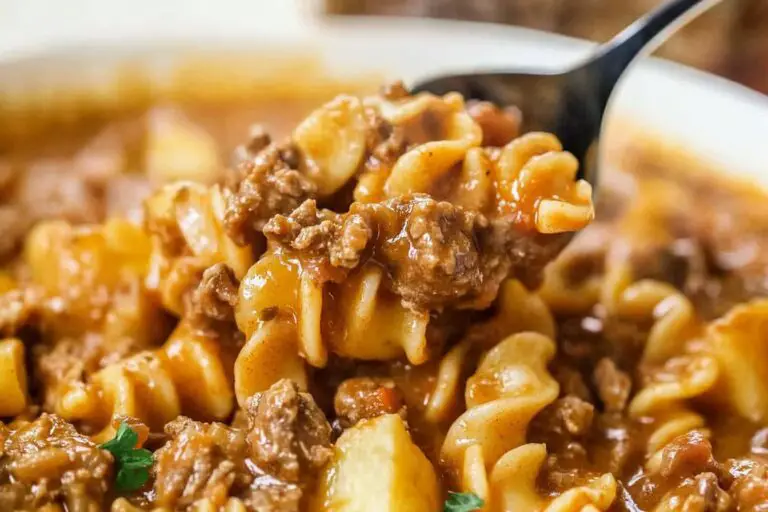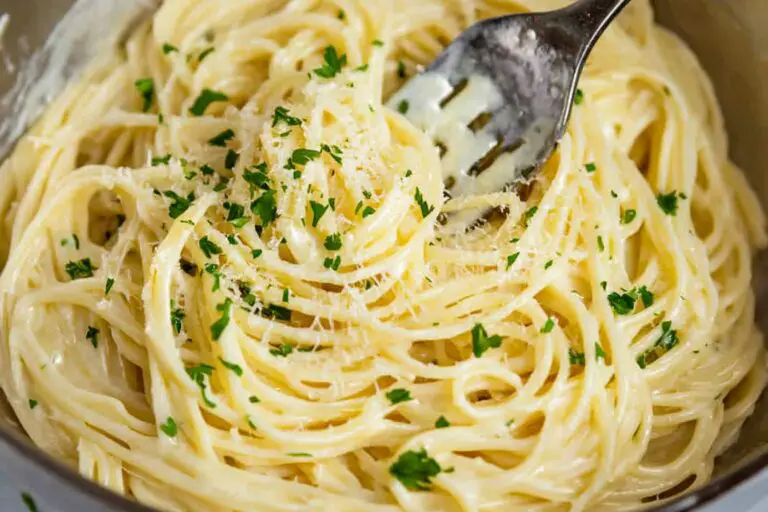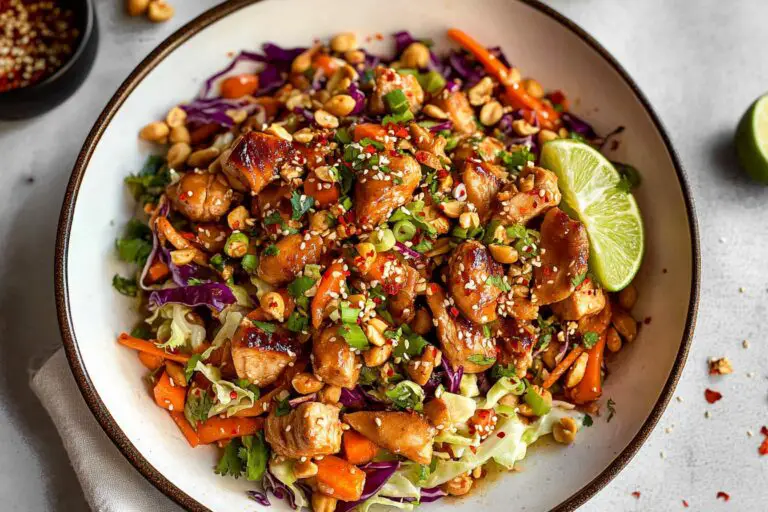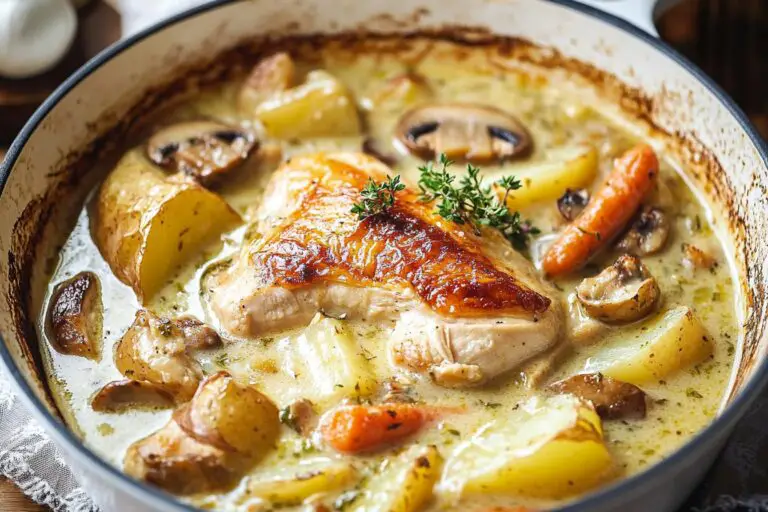Harvest Apple Walnut Salad
Introduction
When the leaves start to turn and there’s a crispness in the air, nothing feels quite as comforting as enjoying delicious and wholesome meals inspired by the season. Fall salads offer an incredible opportunity to celebrate the rich and earthy flavors of autumn while still keeping things light and nourishing. From roasted vegetables to seasonal fruits, these fall salad recipes are a must-try this season.
Detailed Ingredients with Measures
Roasted Butternut Squash
– 2 cups peeled and cubed butternut squash
– 1 tablespoon olive oil
– 1 teaspoon cinnamon
Mixed Greens
– 4 cups mixed leafy greens
Quinoa
– 1 cup cooked quinoa
Sliced Apples
– 1 large apple, thinly sliced
Pecans
– 1/3 cup roughly chopped pecans
Feta Cheese
– 1/4 cup crumbled feta cheese
Dressing
– 3 tablespoons apple cider vinegar
– 2 tablespoons olive oil
– 1 tablespoon honey
– Salt and pepper to taste
Prep Time
Preparing a fall salad is all about simplicity and freshness. Depending on the recipe, the preparation time typically ranges from 10-20 minutes. Whether it involves chopping seasonal fruits and vegetables or mixing the perfect vinaigrette, you won’t need to spend much time getting these salads ready.
Cook Time, Total Time, Yield
Cook time depends on the elements you choose to include. For instance, roasting butternut squash may take about 20-30 minutes. The total time for the recipe, including preparation and cooking, can vary from 30-40 minutes. The recipe typically yields a salad fit for 4 servings, making it ideal for family meals or small gatherings.
Embrace the flavors of autumn in every bite with versatile and creative fall salads to brighten your meals!
“`html
Detailed Directions and Instructions
Step 1: Assemble the Base
– Begin by preparing the leafy greens. Rinse thoroughly under cold water to remove any dirt or debris and pat them dry using a clean kitchen towel or a salad spinner.
– Spread the leafy greens evenly across a large serving bowl or platter to form the salad base.
Step 2: Prepare the Additional Ingredients
– Wash and chop any fresh vegetables you’re using, such as tomatoes, cucumbers, or bell peppers. Slice them thinly or dice them according to your preference.
– For fall-inspired ingredients like roasted butternut squash, roast the cubes in the oven with a drizzle of olive oil, salt, and pepper until tender (approximately 20-25 minutes at 400°F). Allow them to cool slightly before adding to the salad.
– If using apples or pears, slice them thinly and toss them in a small amount of lemon juice to prevent browning.
– If incorporating grains like quinoa, cook them according to the package instructions and let them cool before adding them to the salad.
Step 3: Add Protein
– For proteins such as grilled chicken, slice or shred the chicken into bite-sized pieces.
– If using roasted chickpeas, season them with your preferred spices (paprika, cumin, or garlic powder work well), then roast them in the oven until crispy.
– Scatter the protein of your choice evenly over the salad base.
Step 4: Add Nuts, Seeds, or Cheese
– Sprinkle nuts (like pecans or walnuts) or seeds (like pumpkin seeds) across the salad. Toast them lightly beforehand in a skillet to enhance their flavor if desired.
– For cheese options like goat cheese or feta, crumble it evenly over the salad.
Step 5: Create and Apply the Dressing
– Combine your dressing ingredients in a small bowl or jar. Common fall dressings include vinaigrettes made with apple cider vinegar, Dijon mustard, honey, and olive oil.
– Whisk or shake the dressing until well combined. Taste and adjust the seasoning as necessary.
– Drizzle the dressing over the entire salad just before serving, or serve it on the side for individuals to dress their own portions.
Step 6: Toss and Serve
– Gently toss the salad ingredients together using tongs to evenly distribute the dressing and toppings. Be careful not to crush any delicate items like roasted squash or cheese.
– Serve immediately or cover the salad and refrigerate if preparing in advance.
Notes
Note 1: Ingredient Substitutions
– Feel free to substitute ingredients based on your personal taste or dietary preferences. For example, replace pecans with almonds, or swap feta cheese for blue cheese.
Note 2: Serving Size
– The quantities of ingredients can be adjusted depending on the number of servings you need. Double the recipe for larger gatherings or halve it for a smaller group.
Note 3: Make-Ahead Tips
– To save time, prepare various components (like roasting squash or cooking grains) in advance. Store them separately in airtight containers in the fridge until ready to assemble the salad.
Note 4: Dressing Storage
– Homemade dressings can typically be stored in the refrigerator for up to a week in a sealed container. Shake or stir them before use as separation may occur.
Note 5: Keeping Ingredients Fresh
– When preparing ahead of time, assemble but don’t add the dressing until right before serving. This prevents the greens from becoming soggy.
“`
Cook Techniques
Tossing Fresh Greens
Mix your greens gently in a large bowl to ensure even distribution of any dressing or additional toppings.
Roasting Vegetables
Coat your vegetables lightly with olive oil and roast them in the oven at 375°F until they are tender and slightly caramelized.
Whisking Vinaigrettes
Combine your oil, vinegar, and seasonings in a small bowl. Whisk until emulsified for a smooth and balanced flavor.
Assembling Layers
Start with greens as your base, then layer roasted vegetables, grains, proteins, and toppings for maximum flavor and texture combinations.
Toasting Nuts and Seeds
Toast nuts and seeds in a dry skillet over medium heat until fragrant. Watch closely to avoid burning.
Chopping for Uniformity
Cut all salad ingredients into similar sizes to ensure an even distribution of flavors in every bite.
FAQ
What are the best greens to use for fall salads?
Some great options include kale, spinach, arugula, or mixed greens as they pair well with roasted veggies and hearty toppings.
How can I make my vinaigrette taste better?
Adjust for balance by adding a little honey or mustard for sweetness or a pinch of salt to enhance flavors.
Should I serve fall salads warm or cold?
It’s up to your preference. Some fall ingredients like roasted vegetables can be served warm, while greens are best served chilled.
Can I add grains to my fall salad?
Yes, grains like quinoa, farro, or couscous can add a hearty and satisfying element to fall salads.
How do I store leftovers?
Store leftover salad in an airtight container in the refrigerator. Keep the dressing separated to prevent the salad from becoming soggy.
What proteins work well in fall salads?
Grilled chicken, roasted turkey, boiled eggs, or plant-based proteins like chickpeas or tofu work wonderfully in fall salads.
Are there dairy-free options for fall salad dressings?
Yes, you can use olive oil-based dressings, tahini, or avocado dressings for a dairy-free option.
How do I make my roasted vegetables flavorful?
Season generously with salt, pepper, and your favorite herbs or spices before roasting to enhance their natural flavors.
Can I prepare fall salads ahead of time?
Yes, but store components like greens, roasted vegetables, and dressings separately and combine them just before serving.
What are good seasonal fall toppings for salads?
Consider using ingredients like pomegranate seeds, cranberries, roasted pumpkin seeds, nuts, or apples for a seasonal twist.
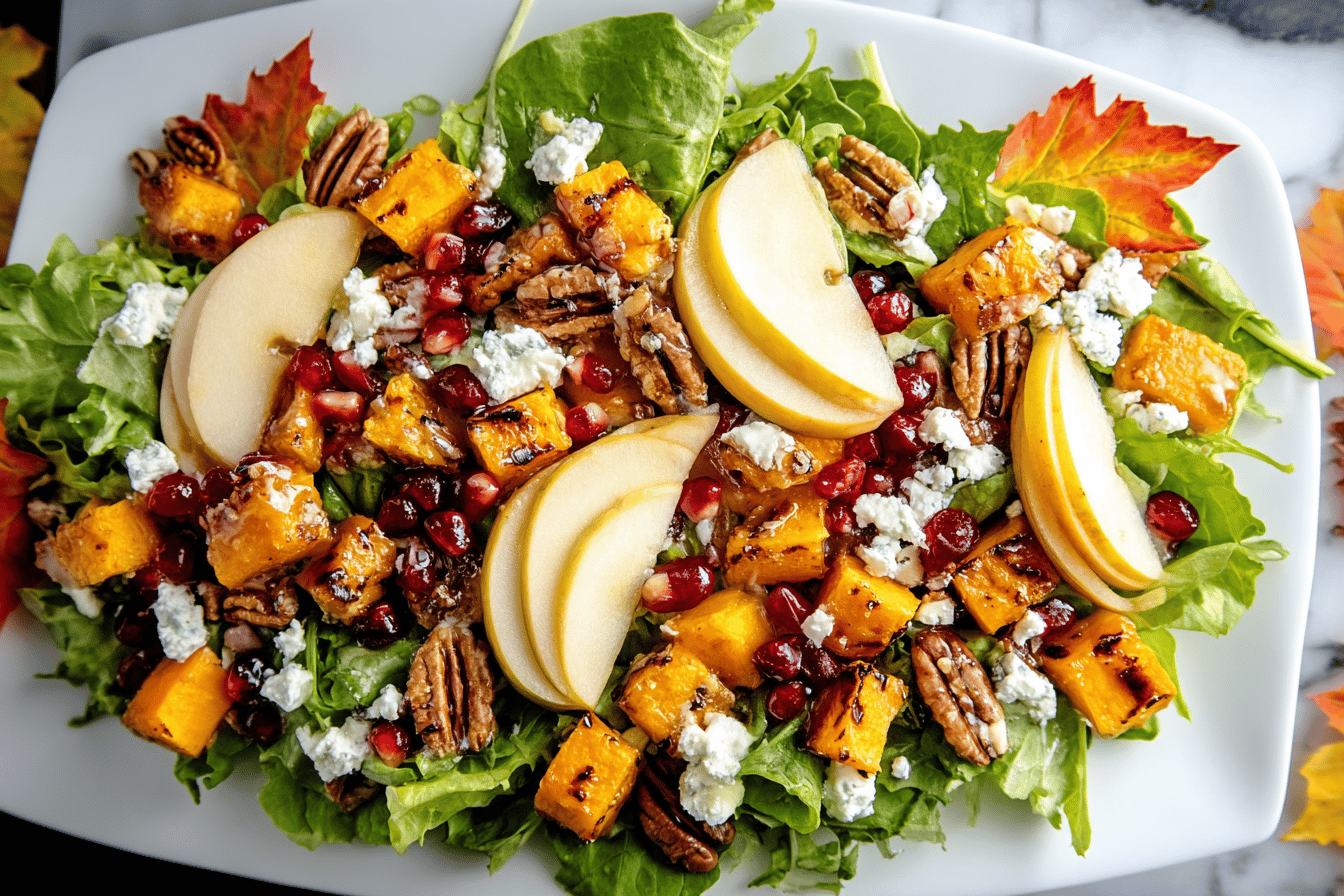
Conclusion
No matter what your preferences might be, fall salads are a fantastic way to enjoy the bounty of the season while staying healthy. From crisp apples and hearty squashes to tangy dressings and satisfying textures, there’s something for everyone to enjoy. These recipes are easy to prepare and can be tailored to suit a variety of dietary needs and personal tastes, making them an ideal choice for quick lunches or side dishes for a dinner gathering.
More recipes suggestions and combination
Apple Walnut Salad with Maple Vinaigrette
Combine crisp apples, crunchy walnuts, dried cranberries, and mixed greens. Top it off with a sweet and tangy maple vinaigrette for a delightful autumn-inspired dish.
Roasted Butternut Squash Salad
Pair roasted butternut squash with arugula, crumbled feta cheese, and pomegranate seeds. Drizzle with a balsamic glaze for a perfect balance of sweet and savory flavors.
Pear and Gorgonzola Salad
Slice fresh pears and mix with Gorgonzola cheese, candied pecans, and spinach. A light vinaigrette complements the creamy and nutty taste beautifully.
Warmed Farro and Sweet Potato Salad
Combine warm farro with roasted sweet potatoes, kale, and toasted pumpkin seeds. Consider a simple honey mustard dressing to tie the flavors together.
Wild Rice and Cranberry Salad
Mix cooked wild rice with dried cranberries, pecans, and chopped celery. Add some apple cider vinaigrette to enhance the dish’s autumn flair.
Beet and Goat Cheese Salad
Roast some vibrant beets and mix them with creamy goat cheese, walnuts, and fresh greens. A splash of citrus dressing brings everything together perfectly.
Brussels Sprouts and Bacon Salad
Shred Brussels sprouts and toss them with crispy bacon, grated Parmesan, and a Dijon mustard vinaigrette for a hearty and satisfying fall salad.


